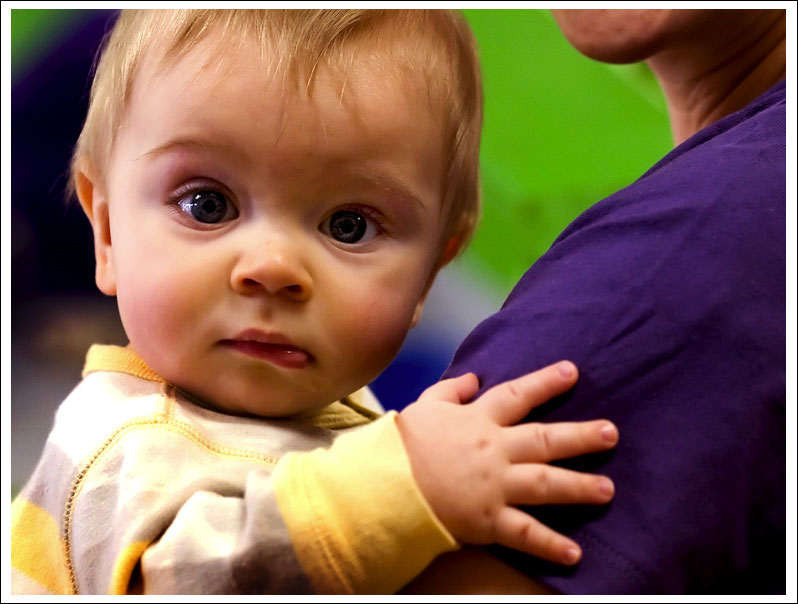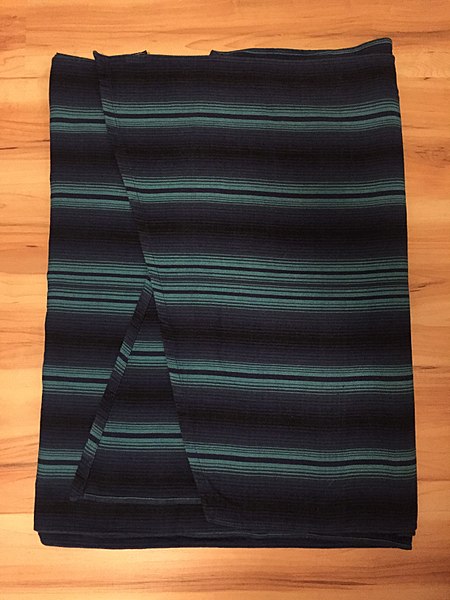10 Things You Need to Know II
6. Introduce only one new food each week. The best time for offering new foods is in the morning. This makes it easier to observe your baby for signs of an allergic reaction, such as a rash, runny nose, congestion, ear infection, fussiness or an upset tummy. Watch for severe reactions. If these occur they should be reported to your baby's health care provider.
7. Expect a change in your baby's stools. As you add solid foods to your baby's diet you will see a change in the color, consistency and frequency of your baby's bowel movements. It is normal to see the stools change color, depending on the food your baby eats. It is also likely that you will see undigested bits of food in your baby's stool.
8. Remember that babies have tiny tummies and do best with small amounts offered through the day, rather than three bigger meals.
9. Follow baby's cues. If your baby doesn't like a food, or just isn't hungry, don't force the issue. (It won't hurt your baby to go back totally to breast or bottle and take a solid food break for a few days.) It's important to keep mealtime enjoyable.
10. Make meals a social event. Allow your baby to sit with the family at mealtime so she can begin to enjoy the social side of sharing a meal with the family. Babies usually love this interaction.
Article From :http://parenting.ivillage.com/baby/bnutrition/0,,69w0,00.html
10 Things You Need to Know I
1. Make sure your baby is ready. The American Academy of Pediatrics recommends waiting until your baby is at least four to six months of age before introducing solid foods. Around this time your baby will begin to show signs of readiness for solids. She begins to sit up well, unsupported; she can pick up small items; and she is very interested in what is on your dinner plate. Every baby is different: It is more important to watch your baby for signs of readiness than to decide an arbitrary time for introducing solids.
2. Go slowly. You and your baby have lots of time to explore this whole new world of culinary delight. Offer your baby very small amounts of food to start out (a half teaspoon or so). Gradually increase the amount you are offering until you are giving your baby one-quarter cup or so of food at a time.
3. Breast milk or formula comes first during baby's first year. To keep an adequate milk supply, if you are breastfeeding, and to provide your baby with his most important food during his first year of life, nurse or feed your baby formula before offering solid foods.
4. There is not one best, set-in-stone, method of food progression. Your baby's likes and dislikes and your family history of allergies/asthma will play a big role in which foods you offer your baby -- and when.
5. Expect things to be a bit messy. Much of the food you feed your baby will end up on her clothes and on the floor. This is par for the course, so dress appropriately.
Continue Part II
Article From : http://parenting.ivillage.com/baby/bnutrition/0,,69w0,00.html
Baby bottle Tips:P
A baby bottle is a bottle with a teat (also called a nipple in the US) to drink directly from. It is typically used if someone can not (as conveniently) drink from a cup, for feeding oneself or being fed.
In particular it is used to feed an infant with infant formula, expressed breast milk or pediatric electrolyte solution.
What should you do ?
- Never leave baby unattended while feeding. Besides the possibility of accidents, you'll want to be there to observe your baby’s feeding habits, changes in preferences – and just enjoy this especially close time.
- Never feed baby while he or she is sleeping or lying down. Until the child can sit up and hold his or her own bottle, hold baby semi-upright. This way you can make sure that the liquid flows directly down the throat, not into nose (which can cause ear infections) or into the lungs, making baby choke.
- Use a clean bottle every time. Bottles and nipples should be washed and rinsed thoroughly before the first use, following the manufacturer’s instructions. After that, wash and dry bottles after each use – again, according to the manufacturer’s instructions.
- Always check the temperature of a bottle’s contents before giving it to baby. In most cases, it needs only to be at room temperature – that is, it should feel slightly warm (not hot!) on your skin.
- Always discard anything left in a bottle after a feeding. Then clean the bottle before the next use, even if it only contained water. This will help ensure a safe and germ-free feeding.
Information from: http://www.babybottle.org/safe_01.html
Choose the rigth Babywearing :D
Benefits of babywearing
Dr. William Sears, a pediatrician, coined the phrase attachment parenting. One of Sears' principles of attachment parenting is babywearing and he attributes many benefits to babywearing and the in-arms style of parenting.Claimed benefits of babywearing include:
- Mothers' progesterone (mothering hormone) is increased through physical contact with the infant, leading to a more intimate maternal bond, easier breastfeeding and better care, thus lowering the incidence of postpartum depression and psychosomatic illness[citation needed].
- Infants who are carried are calmer because all of their primal/survival needs are met. The caregiver can be seen, heard, smelled, touched, tasted, provide feeding and the motion necessary for continuing neural development, gastrointestinal and respiratory health and to establish balance (inner ear development) and muscle tone is constant.
- Infants are more organized. Parental rhythms (walking, heartbeat, etc.) have balancing and soothing effects on infants.
- Infants are "humanized" earlier by developing socially. Babies are closer to people and can study facial expressions, learn languages faster and be familiar with body language.
- Contrary to western cultural myths, independence is established earlier.
- Attachment between child and caregiver is more secure.
- Decreases risk of positional plagiocephaly ("flat head syndrome") caused by extended time spent in a car seat and by sleeping on the back. Sleeping on the back is recommended to decrease the risk of SIDS. Cranial distortion resulting from non-vehicular time in car seats has shown to be more severe than in children who develop plagiocephaly from back-lying on a mattress. Concern over plagiocephaly has also led the American Academy of Pediatrics to recommend that infants “should spend minimal time in car seats (when not a passenger in a vehicle) or other seating that maintains supine positioning. None of the babywearing positions require infants to lie supine while being carried. Infants can even be worn while they sleep, also decreasing sleeping time spent in a supine position.
ป้ายกำกับ: babywearing, Tip




